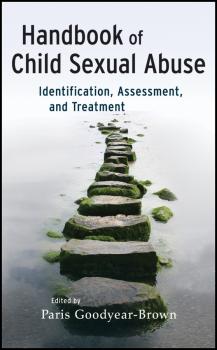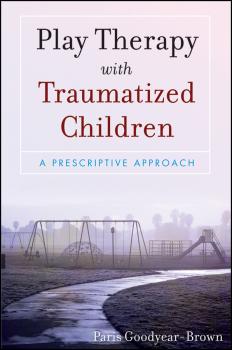ТОП просматриваемых книг сайта:
Paris Goodyear-Brown
Список книг автора Paris Goodyear-BrownАннотация
A comprehensive guide to the identification, assessment, and treatment of child sexual abuse The field of child sexual abuse has experienced an explosion of research, literature, and enhanced treatment methods over the last thirty years. Representing the latest refinements of thought in this field, Handbook of Child Sexual Abuse: Identification, Assessment, and Treatment combines the most current research with a wealth of clinical experience. The contributing authors, many of whom are pioneers in their respective specialties, include researchers and clinicians, forensic interviewers and law enforcement professionals, caseworkers and victim advocates, all of whom do the work of helping children who have been sexually victimized. Offering a snapshot of the state of the field as it stands today, Handbook of Child Sexual Abuse explores a variety of issues related to child sexual abuse, from identification, assessment, and treatment methods to models for implementation and prevention, including: The impact of sexual abuse on the developing brain The potential implications of early sexual victimization Navigating the complexities of multidisciplinary teams Forensic interviewing and clinical assessment Treatment options for children who have traumagenic symptoms as a response to their sexual victimization Treating children with sexual behavior problems and adolescents who engage in illegal sexual behavior Secondary trauma and vicarious traumatization Cultural considerations and prevention efforts Edited by a leader in the field of child therapy, this important reference equips helping professionals on the front lines in the battle against child sexual abuse—not merely with state-of-the-art knowledge—but also with a renewed vision for the importance of their role in the shaping of our culture and the healing of victimized children.
Аннотация
Introducing a practical model of play therapy for traumatized children Some of the most rewarding work a therapist can do is help a child recover from a traumatic event. But where to begin? A growing body of play therapy literature offers many specific techniques and a variety of theoretical models; however, many therapists are still searching for a comprehensive model of treatment that incorporates solid theoretical constructs with effective play therapy interventions. Clinicians have long recognized that trauma therapy is not just a matter of techniques but a journey with a beginning, middle, and end. In a pioneering contribution to the field, Play Therapy with Traumatized Children: A Prescriptive Approach, the author codifies the process in her model, Flexibly Sequential Play Therapy (FSPT). Integrating non-directive and directive approaches, this components-based model allows for the uniqueness of each child to be valued while providing a safe, systematic journey towards trauma resolution. The FSPT model demystifies play-based trauma treatment by outlining the scope and sequence of posttraumatic play therapy and providing detailed guidance for clinicians at each step of the process. Dramatically demonstrating the process of healing in case histories drawn from fifteen years of clinical practice with traumatized children, Play Therapy with Traumatized Children addresses: Creating a safe place for trauma processing Augmenting the child's adaptive coping strategies and soothing his or her physiology Correcting the child's cognitive distortions Ensuring that caregivers are facilitative partners in treatment Inviting gradual exposure to trauma content through play Creating developmentally sensitive trauma narratives Using termination to make positive meaning of the post-trauma self


